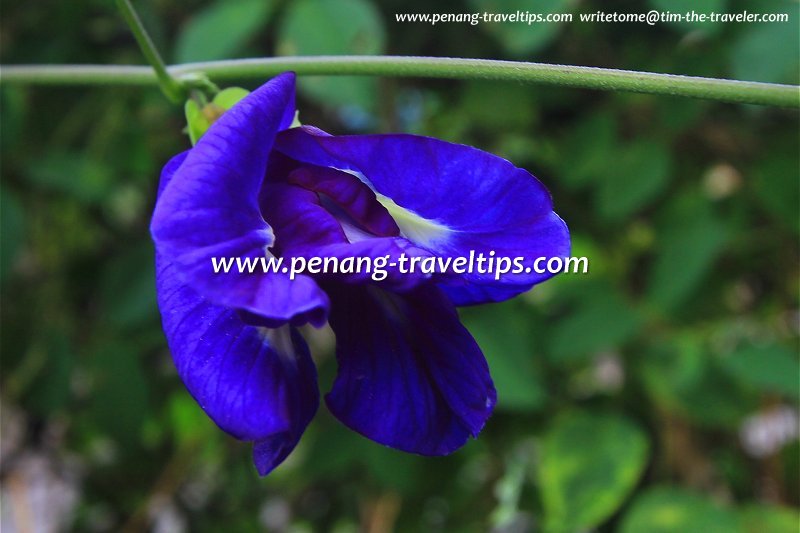 The bunga telang in the garden (30 March 2013)
The bunga telang in the garden (30 March 2013)
The Butterfly-Pea Flower, also called bunga telang, is often used when making various Nyonya kuihs in Penang. Also known as blue-pea and cordofan-pea, or by its scientific name Clitoria ternatea, the bunga telang is popularly found in pulut inti, pulut tatai and Nyonya chang.
The bunga telang has to be prepared before you can use them for making the various kuihs. After plucking the bunga telang from the garden, we would leave them to dry in a basket. While they are half dry, we pluck off the calyx (the green part holding the flower) as these don't have the blue dye. Once the flowers are dried, we put them in a plastic bag in the refrigerator until such time that they are needed. The bunga telang can be kept for a very long time - according to my mother-in-law, she has hers in the fridge for two years, and they are still usable. (I have yet to keep it for that long though).
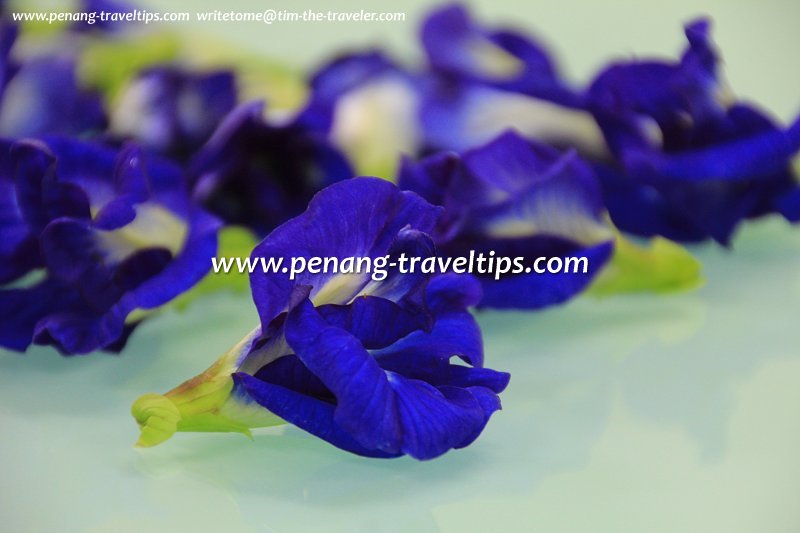 Fresh bunga telang on the table (30 March 2013)
Fresh bunga telang on the table (30 March 2013)
To get your dried bunga telang to release their dye, you have to cook it in a pot. You just need a handful (though that weighs 5 grams or less). After cooking for a while, the flowers start to release their dye. The water becomes ink blue while the spent flowers look like discarded tissue paper or papier-mâché.
Soak your glutinous rice in the resulting blue dye for at least four hours or more to ensure that the colour absorbs right into the rice. The rice grains expand in the process, so you need enough blue water to completely immense the rice to a depth of an inch. The rice should expand to reduce the depth or sometimes even emerge above the water line.
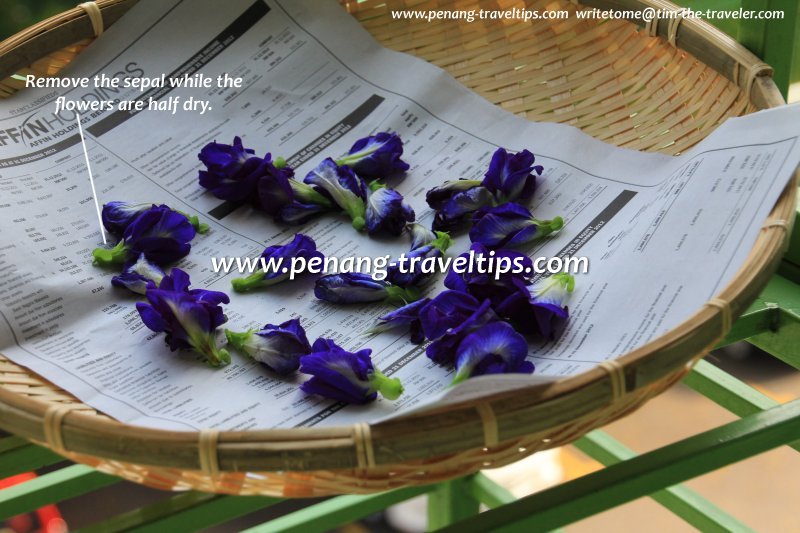 Bunga telang drying in a tray (30 March 2013)
Bunga telang drying in a tray (30 March 2013)
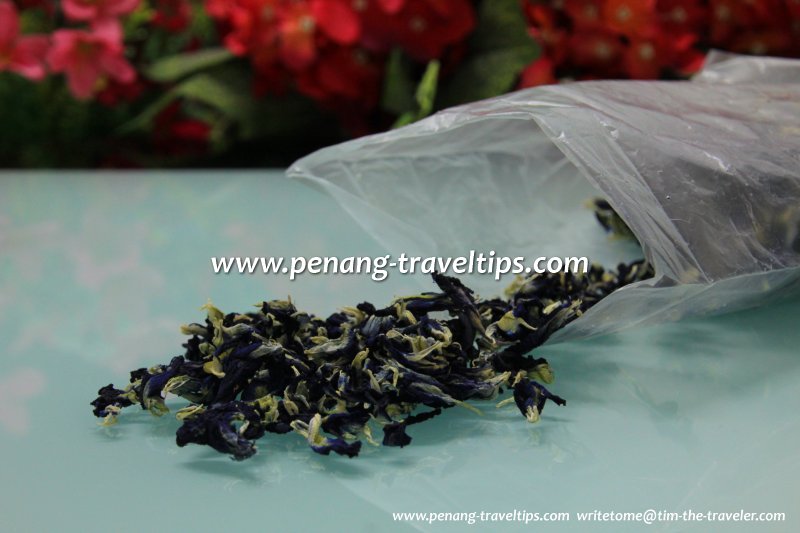 Dried bunga telang (24 March 2013)
Dried bunga telang (24 March 2013)
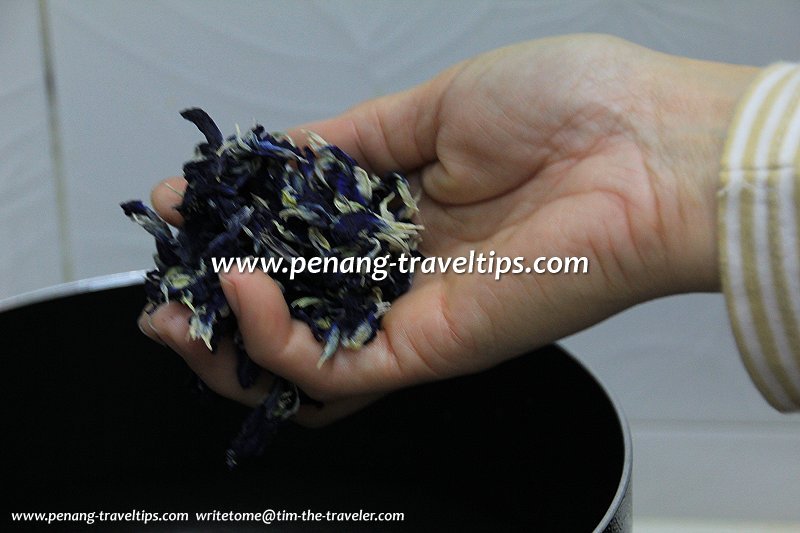 Cook a handful of bunga telang (30 March 2013)
Cook a handful of bunga telang (30 March 2013)
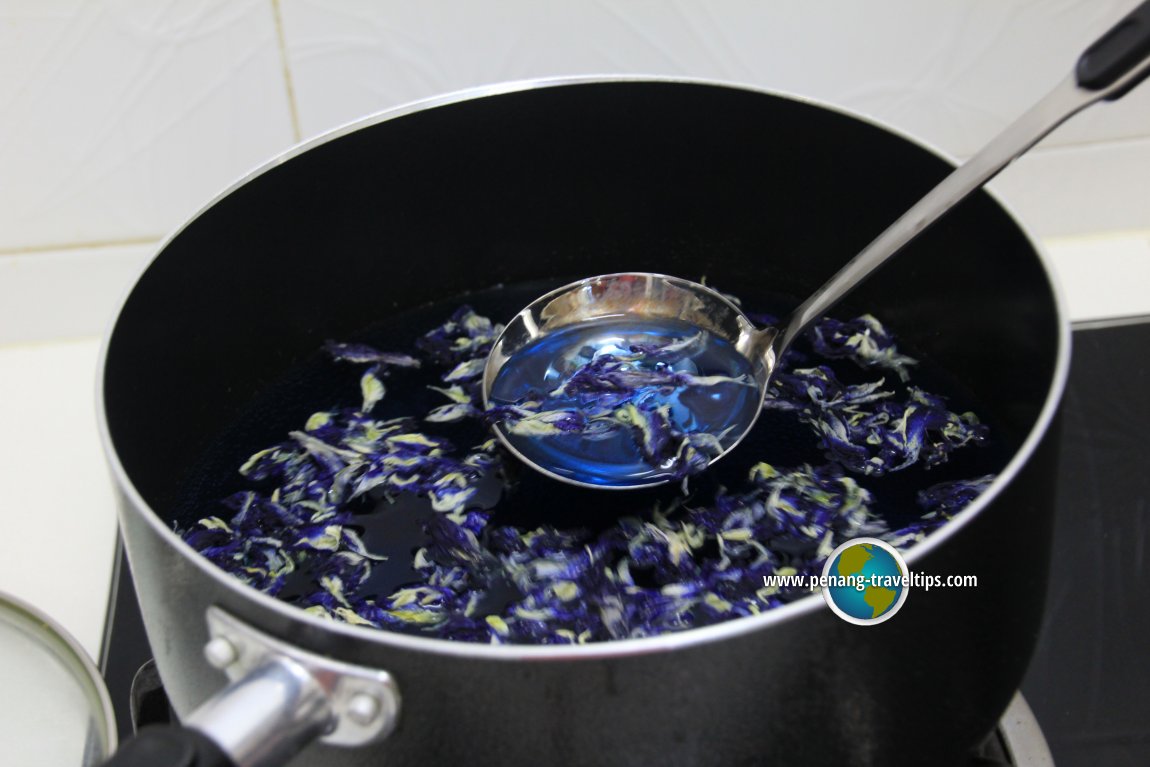 Bunga telang cooking in a pot (30 March 2013)
Bunga telang cooking in a pot (30 March 2013)
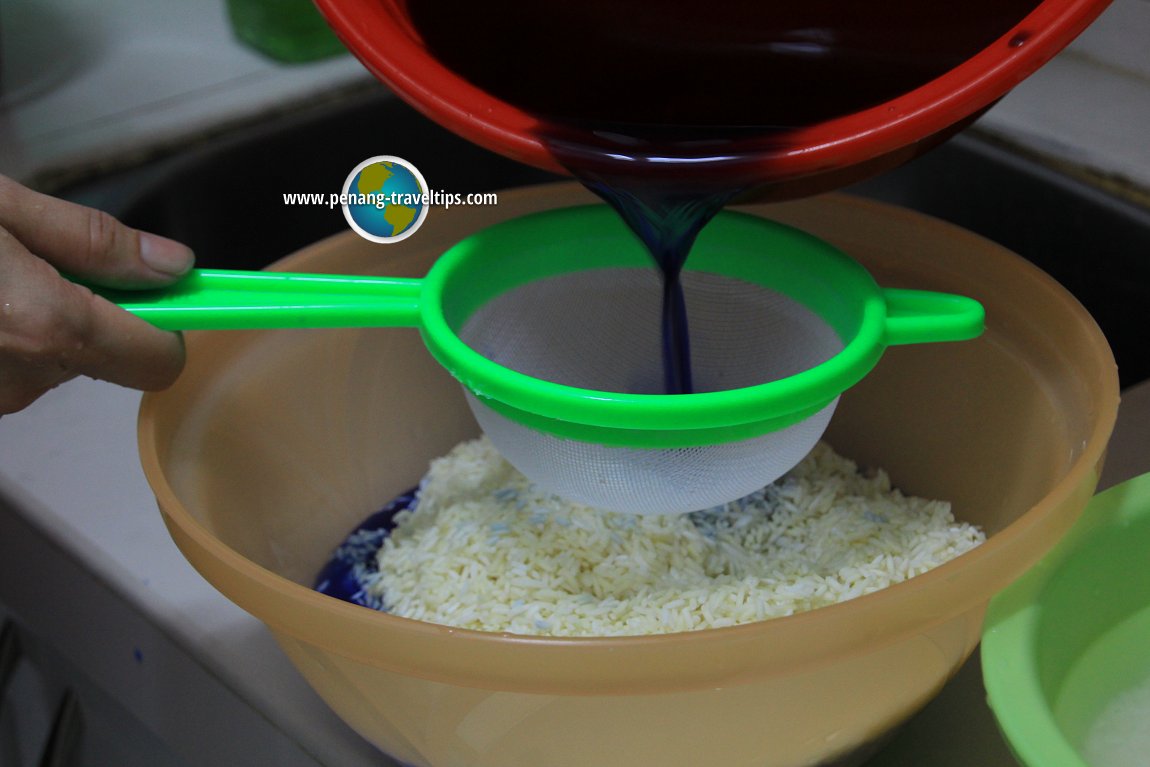 Pour the bunga telang dye to the pulut (30 March 2013)
Pour the bunga telang dye to the pulut (30 March 2013)
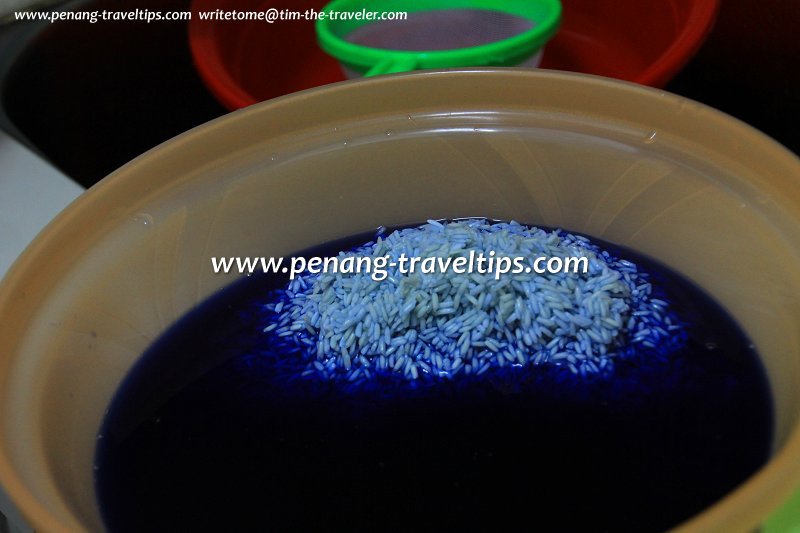 Pulut rice in bunga telang dye (30 March 2013)
Pulut rice in bunga telang dye (30 March 2013)
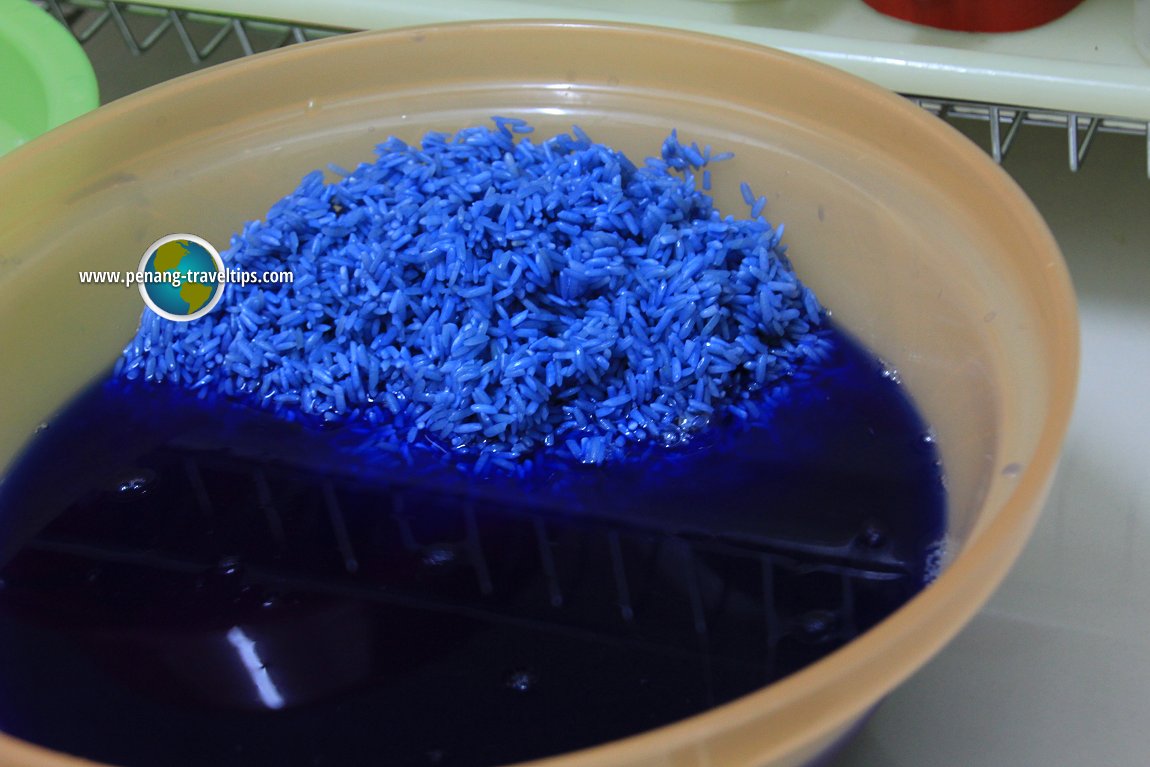 Soaked pulut rice (30 March 2013)
Soaked pulut rice (30 March 2013)
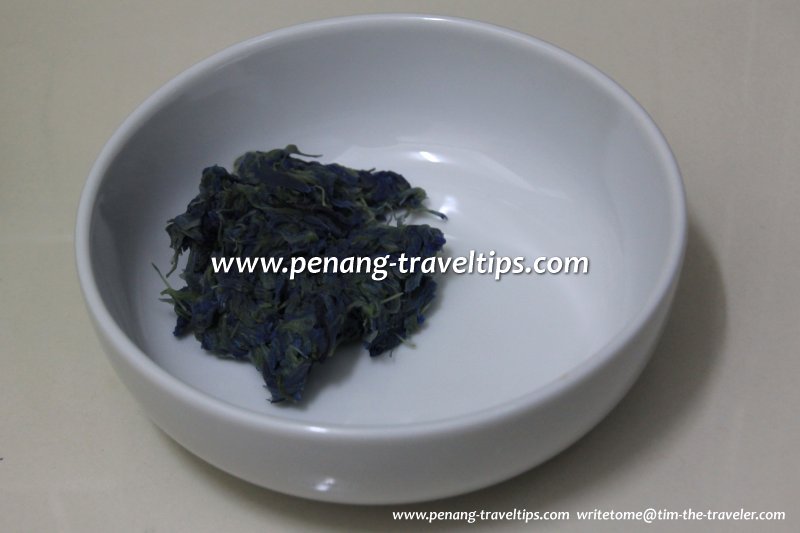 Spent bunga telang (30 March 2013)
Spent bunga telang (30 March 2013)
 Copyright © 2003-2025 Timothy Tye. All Rights Reserved.
Copyright © 2003-2025 Timothy Tye. All Rights Reserved.
Copyright © 2003-2025 Timothy Tye. All Rights Reserved.

 Go Back
Go Back